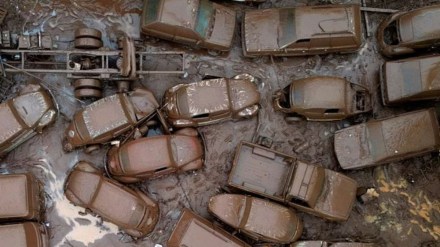Heavy rains wreaked havoc in Brazil’s southernmost state of Rio Grande do Sul this week and claimed the lives of at least 55 people, according to local authorities, reported Reuters on Saturday evening.
Dozens more are still missing, with 74 individuals unaccounted for, and over 69,000 displaced as storms battered nearly two-thirds of the state’s 497 cities. Rio Grande do Sul, sharing borders with Uruguay and Argentina, faced a deluge that triggered floods, landslides, and the partial collapse of a dam at a hydroelectric power plant. Another dam in Bento Goncalves is under threat of collapsing, heightening the risk.
The capital city, Porto Alegre, witnessed the Guaiba lake spilling over, inundating streets, while the international airport suspended all flights indefinitely. State Governor Eduardo Leite described the situation as necessitating a “Marshall Plan” akin to Europe’s post-World War Two economic recovery efforts.
Government Response and Presidential Visit
President Luiz Inacio Lula da Silva, who visited Rio Grande do Sul on Thursday, is set to return to the state on Sunday to oversee rescue operations. Lula emphasized the government’s commitment to providing support, stating that they are in constant communication with state and local authorities.
More Rain Predicted
Although rainfall is forecasted to continue in the northern and northeastern regions until Sunday, the intensity is decreasing compared to earlier in the week. However, Leite cautioned that river levels are expected to remain elevated for some time.
Rio Grande do Sul’s unique geographical position, straddling tropical and polar atmospheres, contributes to its erratic weather patterns, alternating between intense rainfall and drought periods. Local scientists attribute the intensification of these patterns to climate change, highlighting the urgent need for mitigation and adaptation measures.
